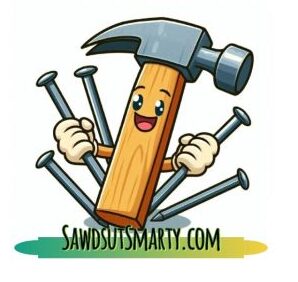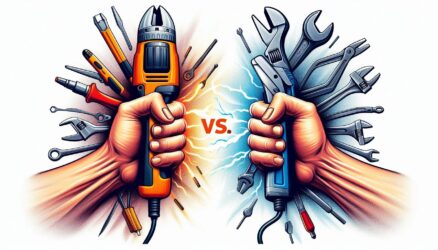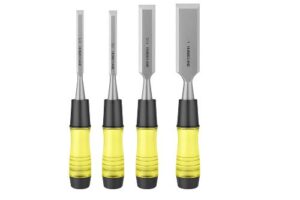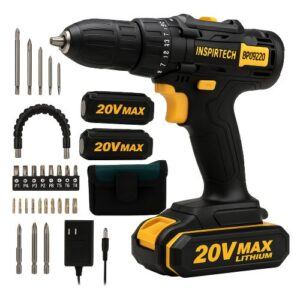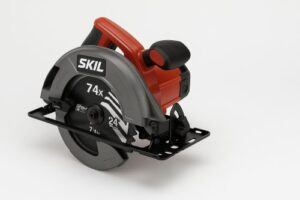When you stack Power Tools vs. Hand Tools side-by-side, the truth is simple:
Both camps will swear their way is the only way to build anything worth a damn.
Some folks insist a razor-sharp chisel and a steady hand can out-perform any machine ever made…
And others won’t cut a toothpick unless it’s powered by a lithium battery with a warranty attached.
But here’s the real scoop: smart woodworkers know when to go old-school, when to hit the trigger, and when to mix both so you get speed and precision without tearing up your project — or your wallet.
This page cuts through all the noise and gives you the real-world differences, the strengths, the weaknesses, and exactly when each type of tool earns its keep in your shop.
No fluff, no theory — just practical advice you can actually use on your next project.

🛠️ Essential Tools That Highlight the Difference
Before we jump into the good stuff, here’s a quick look at three basic tools that perfectly show the difference between power tools and hand tools.
You’ve seen most of these in our other beginner-friendly pages —
and you’ll probably use all three on half the projects you build.
🔧 Chisel Set
A sharp chisel set handles everything from cleaning up notches to fitting frames and trimming small details. Most woodworking projects are full of spots where only a chisel will get the job done cleanly.
🌟 Amazon Product Suggestion:
✔️Hurricane 4-Piece Wood Chisel Set
(CR-V Steel)
A sharp set of chisels is absolutely essential for dovetails, and this Hurricane set delivers serious performance on a budget. CR-V steel holds an edge well, the handles are tough, and the size selection hits every dovetail task — from cleaning waste to paring to your shoulder lines.
Why It’s Great:
✔️ Essential for tight joinery and clean-up work
✔️ Perfect for frame notches, mortises, and bevel adjustments
✔️ A versatile staple for any serious woodworking project
✔️ Durable enough for hardwoods and marine ply
Drill
From pre-drilling to driving screws into the frame, legs, and backrest, a good cordless drill keeps this build moving smoothly.
Look for something with solid torque, a comfortable grip, and a quick-change chuck so you can jump between drill bits and drivers without missing a beat.
🌟 Amazon Product Suggestion:
✔️ INSPIRITECH 20V Cordless Drill
(My Personal Choice!)
This is the cordless drill I use in my own shop, and it’s been rock-solid. The INSPIRITECH 20V kit includes two batteries, a charger, drill/driver bits, a flexible extension, and a handy tool bag. With 24 torque settings and a comfortable grip, it’s perfect for mailbox builds, repairs, and everyday woodworking.
Why it’s great:
✔️ Two 20V batteries — work nonstop
✔️ Includes bits, extension, and tool bag
✔️ Lightweight and easy to control
✔️ Strong enough for outdoor projects
✔️ Affordable, complete starter kit
SKIL Saw
A circular saw is the real workhorse of this project.
Whether you’re trimming boards, cutting legs to length, or ripping wider lumber down to size, a SKIL Saw delivers fast, accurate cuts without the bulk of a table saw.
It’s perfect for beginners and pros alike, making it a natural fit for any shop.
🌟 Amazon Product Suggestion:
✔️ SKIL 15-Amp 7-1/4″ Circular Saw
(5280-01)
This SKIL saw is a solid, no-nonsense workhorse for cutting lumber.
The 15-amp motor gives you smooth, confident cuts, and the built-in laser helps keep your lines straight. It’s lightweight, easy to handle, and perfect for breaking down boards for a project like this porch bench.
Why It’s Great:
✔️Strong 15-amp motor
✔️Laser guide for straight cuts
✔️Lightweight and beginner-friendly
✔️Great for rip cuts and crosscuts
✔️Excellent value for the price
⚔️ Power Tools Vs. Hand Tools: The Real Breakdown
Let’s be honest — nobody needs a philosophy lecture about electricity and craftsmanship.
You need the real-world differences, and here they are.
⚖️ Power Tools vs. Hand Tools: Key Differences
| Feature | Hand Tools | Power Tools |
| Speed | Slower | Much faster |
| Precision | Extremely precise in skilled hands | Fast and consistent |
| Noise | Very quiet | Loud—requires hearing protection |
| Portability | Ultra-portable | Often bulkier, need power |
| Cost | Lower entry cost | Higher upfront investment |
| Skill Learning Curve | Takes time to master | Easier to pick up |
| Maintenance | Sharpening and tuning | Cleaning, dust control, electricity |
| Safety | Safer (usually) | Higher risk—more safety precautions needed |
1. Speed
Power tools win by a mile. They chew through lumber like nothing.
Hand tools are slower… unless you enjoy sweating like you’re on a prison chain gang.
2. Control
Hand tools dominate precision.
Chisels, planes, and handsaws let you feel the cut instead of forcing it.
3. Skill Curve
Power tools are plug-and-play.
Hand tools take practice and patience — but the payoff is huge.
4. Noise & Dust
Power tools = dust clouds and noise complaints.
Hand tools = peaceful, quiet, almost therapeutic.
5. Safety
Power tools can ruin your day in half a second if you’re careless.
Hand tools can still bite — but you’re unlikely to lose a limb.
6. Cost
Power tools add up fast.
Hand tools are cheaper individually… but beware the rabbit hole of “just one more chisel.”
7. Accuracy
Power tools win on straight lines and consistency.
Hand tools win on finesse and cleanup.
8. Best For Beginners
A mix of both.
Start simple, add tools as your skills grow.
🪚 10 Practical Steps for Choosing the Right Tool Every Time
Here’s the step-by-step breakdown you can actually use in your shop.
Follow this and you’ll never grab the wrong tool again.
Step 1 — Ask: Do I need speed or control?
👉👉 Pro Tip: If you’re working on joinery or anything visible, lean toward hand tools.
Step 2 — Check the cut quality.
👉👉 Pro Tip: Circular saws tear out grain; chisels and hand saws clean it up beautifully.
Step 3 — Think about the noise level.
👉👉 Pro Tip: Late-night projects? Hand tools keep the neighbors from plotting your death.
Step 4 — Consider the material thickness.
👉👉 Pro Tip: Thick hardwood? Power tools save your sanity.
Step 5 — Look at the curve or shape you need.
👉👉 Pro Tip: Tight curves = hand tools. Straight lines = power tools.
Step 6 — Evaluate your experience level.
👉👉 Pro Tip: New to woodworking? Start with simple power tools for rough work, finish with hand tools.
Step 7 — Check the accuracy required.
👉👉 Pro Tip: If the measurement matters, slow down and work by hand.
Step 8 — Don’t forget safety.
👉👉 Pro Tip: If you’re tired, stick with hand tools. Power tools don’t care.
Step 9 — Measure twice, cut once… the old cliché is still true.
👉👉 Pro Tip: Power tools amplify mistakes. Hand tools let you correct them.
Step 10 — Mix both for best results.
👉👉 Pro Tip: The best woodworkers use power tools for speed and hand tools for finesse.
🧠 Final Thoughts
At the end of the day, Power Tools Vs. Hand Tools isn’t a battle —
It’s a partnership.
Power tools give you speed and efficiency.
Hand tools give you control and craftsmanship.
The smartest woodworkers use both and know when each one shines.
Start small, build your toolbox slowly, and enjoy the process —
That’s what woodworking is all about.
🪵 More Woodworking Projects You’ll Love
If you’re looking for your next build, here are a few reader favorites from SawdustSmarty:
Craft it. Shape it. Own it!
🧰 Need More Woodworking Plans?
👉👉 Click here to learn more about Ted’s Woodworking Plans:
If you want hundreds of additional project ideas with clear step-by-step instructions, my full review breaks down exactly what you get inside Ted’s Woodworking Plans.
It’s a great resource if you like weekend builds, simple jigs, or classic shop projects.
Check out the full review here → Ted’s Woodworking Plans
💡 Turn Your Woodworking Passion Into Income
👉👉 Click here to learn more about Wealthy Affiliate
SawdustSmarty started as a simple hobby.
It grew because I finally learned how to build a real website — the right way. If you’ve ever thought about turning woodworking into a side business or income stream, Wealthy Affiliate is the training I personally recommend.
Click here to read more → Wealthy Affiliate
